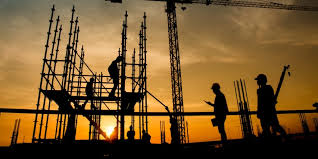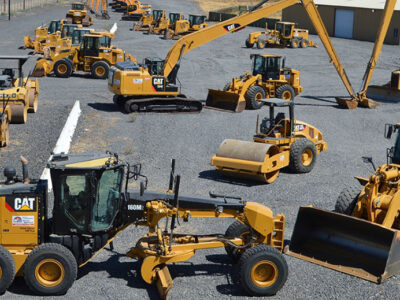The hallmark of a construction site in California or anywhere in the country is the hard hat. The Occupational Safety and Health Administration (OSHA) requires workers to wear hard hats whenever there is a risk of being struck by falling or moving objects. This is because struck-by accidents are one of the most common ways construction workers are injured.
Many struck-by incidents may cause only bruises, but they also have the potential to cause serious and even fatal harm. In fact, struck-by accidents are the second most frequent cause of death on construction sites, following closely behind fatal falls.
According to the U.S. Bureau of Labor Statistics (BLS), struck-by incidents account for nearly 10% of construction worker deaths annually. OSHA classifies them as one of the “Fatal Four” hazards, along with falls, electrocutions, and caught-in/between accidents. Eliminating these four categories alone would save the lives of more than 500 construction workers each year.
Causes and Categories of Struck-By Accidents
Struck-by accidents fall into four categories, each presenting risks that can be devastating for workers.
Rolling Object Hazards
Working around large vehicles and moving equipment is an obvious hazard. A single moment of inattention can be catastrophic. Vehicle operators often have limited visibility, particularly when backing up. Workers should avoid areas where heavy equipment is in use.
Swinging Object Hazards
Swinging object accidents happen when items being lifted by cranes or other equipment move with momentum. These objects may sway and are difficult to control. Training teaches workers how to avoid the swing radius, but on California high-rise and infrastructure projects, crane hazards remain especially significant. Improper training or maintenance often leads to serious accidents.
Falling Object Hazards
Supervisors may section off areas to protect passersby from falling debris or tools, but workers are often required to be in these zones. A hard hat can protect against small objects, but even a tool dropped from a height can cause fatal injuries. Heavy items, such as sledgehammers, power tools, or crane loads, can easily overcome nets or helmets.
Flying Object Hazards
Flying hazards are most often caused by power tools such as nail guns. Misfired nails may project like bullets and have even traveled through walls to strike workers. In California, Cal/OSHA specifically regulates pneumatic tools and requires contractors to implement safety measures such as nail gun training, tool guards, and monitoring.
Employer Responsibilities Under OSHA and Cal/OSHA
Employers and contractors in California have a legal duty to provide safe work sites. Their responsibilities include:
- Providing ANSI-approved hard hats, eyewear, and other PPE
- Conducting hazard assessments for struck-by risks
- Implementing safety plans and toolbox talks on crane and equipment safety
- Maintaining and inspecting machinery and tools regularly
- Training employees in multiple languages, as required under California law
When employers fail in these responsibilities, they may face OSHA or Cal/OSHA violations, and workers may suffer preventable injuries.
The Consequences of Struck-By Accidents
The results of a struck-by accident can be devastating. Injuries may include:
- Traumatic Brain Injuries (TBI)
- Fractures and Broken Bones
- Eye Trauma and Vision Loss
- Spinal Cord Injuries
- Permanent Disability or Death
These injuries often require hospitalization, surgeries, rehabilitation, and long-term care. Many workers also experience emotional distress or post-traumatic stress disorder (PTSD). Families may struggle with lost income and medical costs.
In California, workers’ compensation is meant to provide medical care and financial support. However, many workers find it difficult to obtain full benefits without legal assistance.
The Workers’ Compensation Claim Journey
Filing a workers’ compensation claim after a struck-by accident involves specific steps:
- Report the Injury Immediately – You must notify your employer within 30 days.
- Seek Medical Treatment – Your employer must provide access to authorized care.
- File a DWC-1 Claim Form – This officially starts your case with the California Division of Workers’ Compensation (DWC).
- Benefit Review – You may qualify for medical care, temporary disability, or permanent disability benefits.
- Disputes – Employers or insurers may deny claims or minimize benefits.
- Appeals – Denied claims can be appealed before the Workers’ Compensation Appeals Board (WCAB).
Without legal assistance, many workers face delays or reduced settlements.
Beyond Workers’ Compensation: Third-Party Liability
In some struck-by accidents, additional legal claims may apply:
- Defective Equipment – A faulty crane, nail gun, or tool may create liability for manufacturers.
- Third-Party Negligence – Another subcontractor’s mistakes may expose you to additional claims.
- Wrongful Death – Families who lose loved ones may pursue compensation beyond workers’ comp.
These claims can cover damages such as pain and suffering or loss of companionship, which are not included in standard workers’ compensation.
How to Protect Yourself on the Job
Although employers hold the main responsibility, workers can take steps to reduce risks:
- Wear required PPE (hard hats, eye protection, high-visibility gear)
- Participate in safety training and stand-down programs
- Avoid blind spots around equipment
- Follow hazard plans and report unsafe practices immediately
Still, even the most careful workers cannot always prevent struck-by accidents caused by unsafe conditions.
Frequently Asked Questions (FAQs)
What are the four types of struck-by hazards?
Rolling, swinging, falling, and flying objects.
What should I do after being struck by an object?
Report the injury, seek medical care, and file a workers’ compensation claim.
Can I sue my employer for a struck-by accident?
Generally, no. Workers’ comp is your main remedy. But third-party or defective product claims may be possible.
How long does a workers’ comp claim take?
It varies. Many cases take months, especially if insurers dispute the severity of injuries.
What if I wasn’t wearing a hard hat?
Workers’ comp is a no-fault system. Benefits are still available even if you weren’t wearing PPE.
What is the average settlement in California?
It depends on the severity of your injuries, medical costs, and disability rating. Severe injuries like TBIs often result in higher settlements.
Get Legal Help Today
If you or a loved one has been injured in a struck-by accident on a construction site in California, you should not face the aftermath alone. Navigating workers’ compensation, employer liability, and third-party claims can be overwhelming without professional support.
At Hussain & Gutierrez, our legal team is dedicated to protecting construction workers and ensuring they receive the compensation and benefits they deserve.



